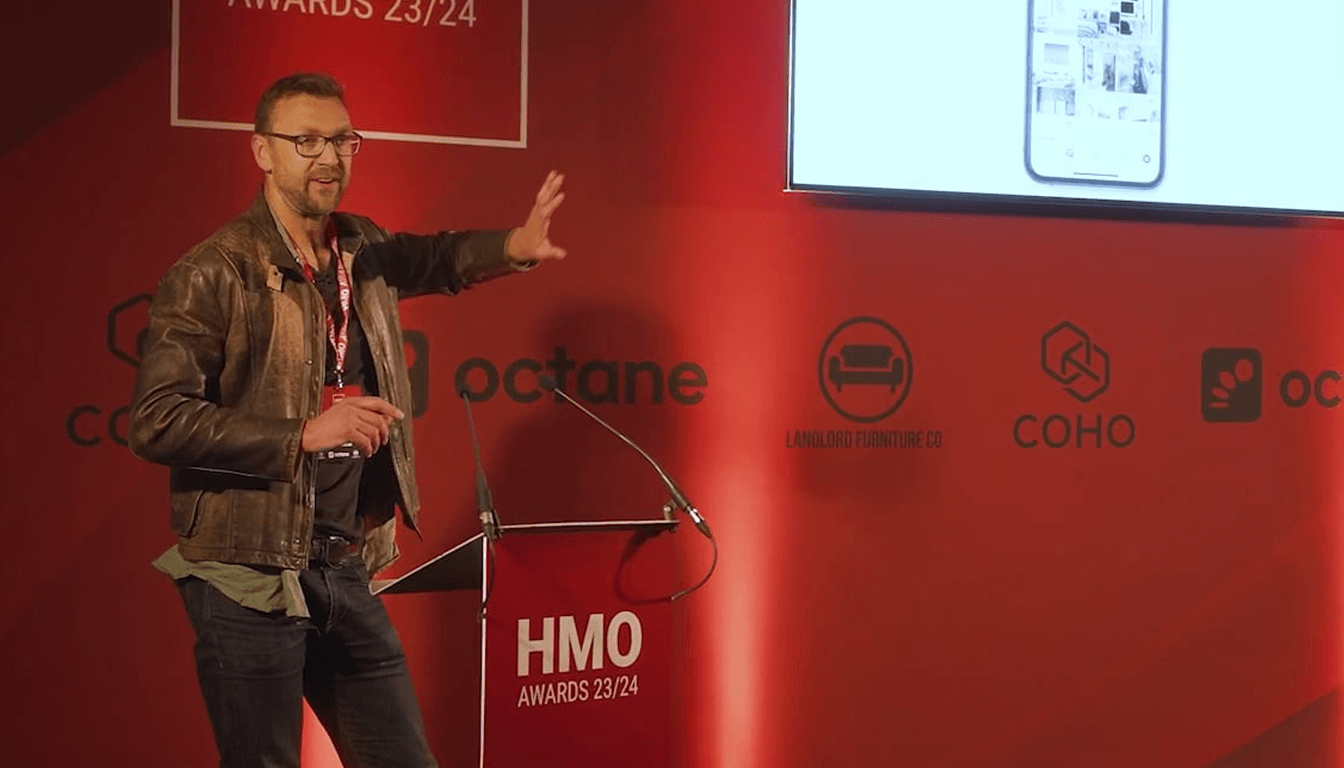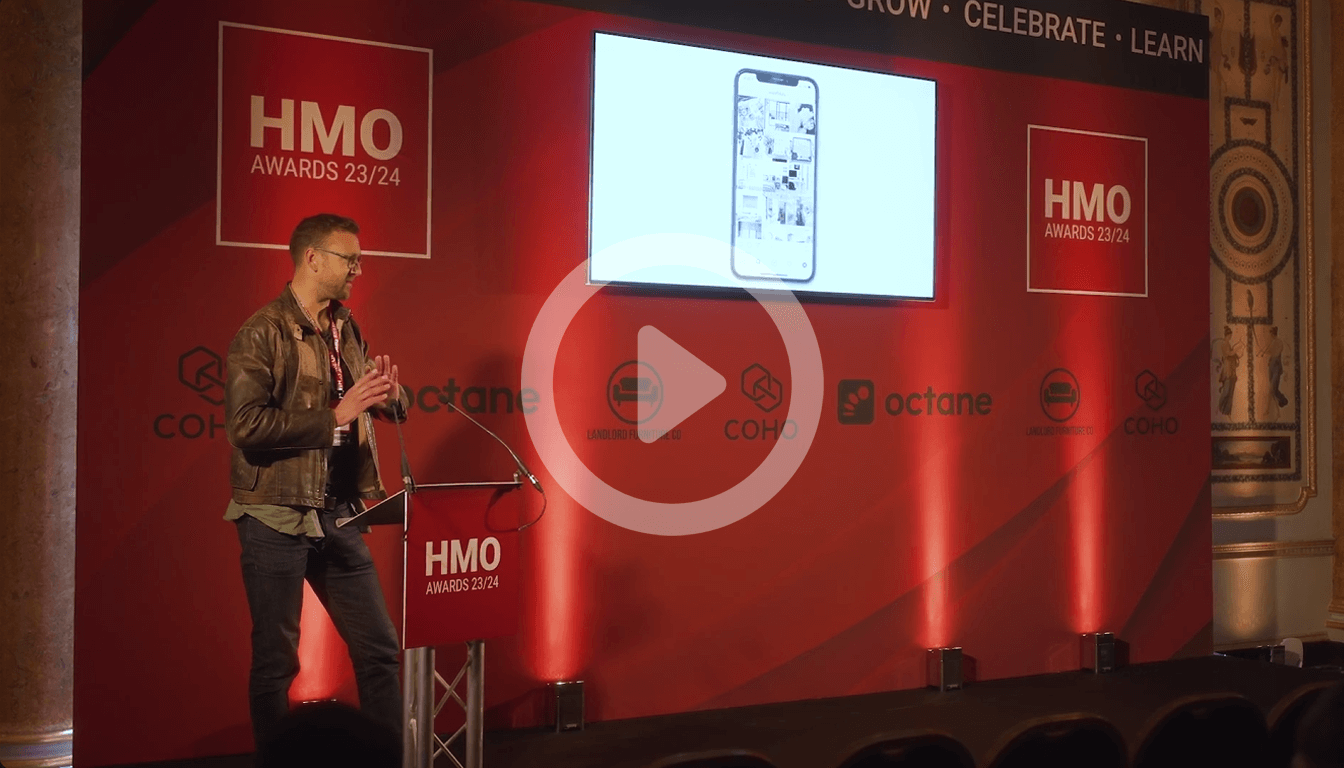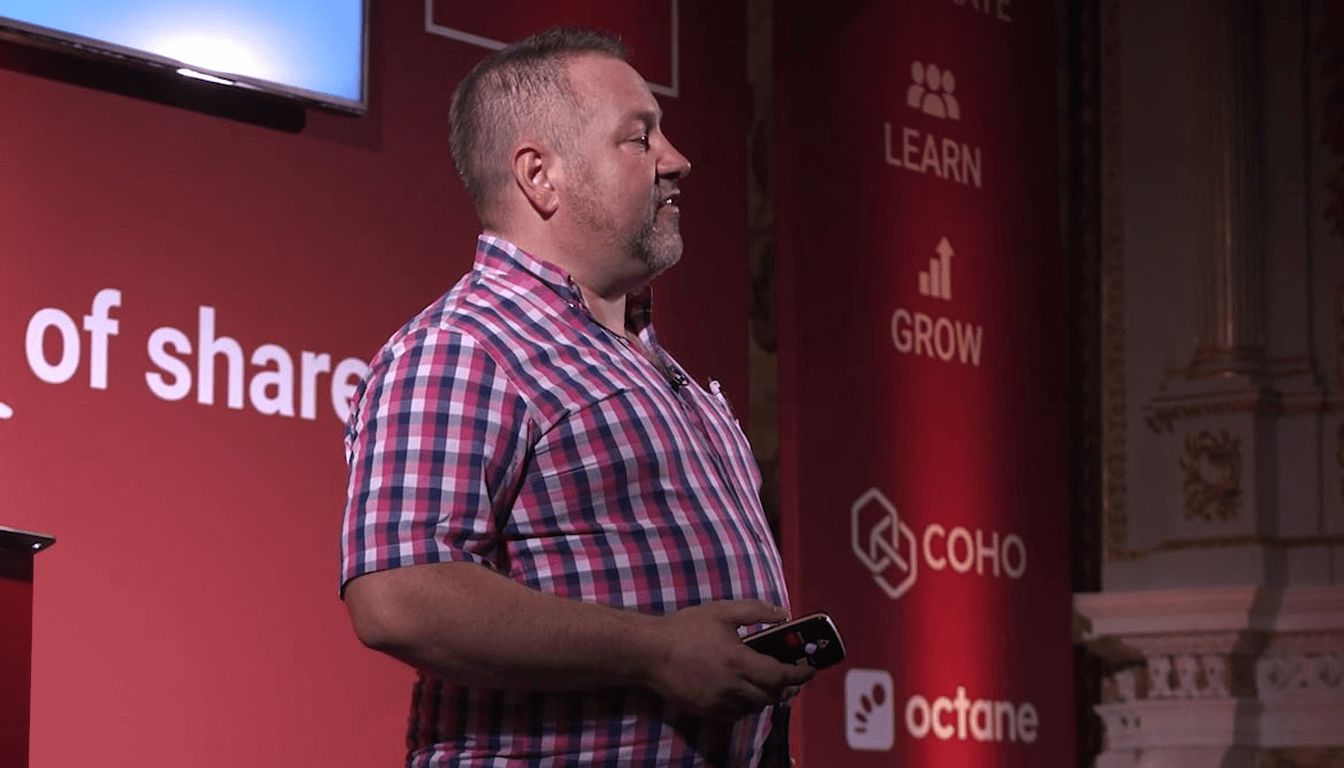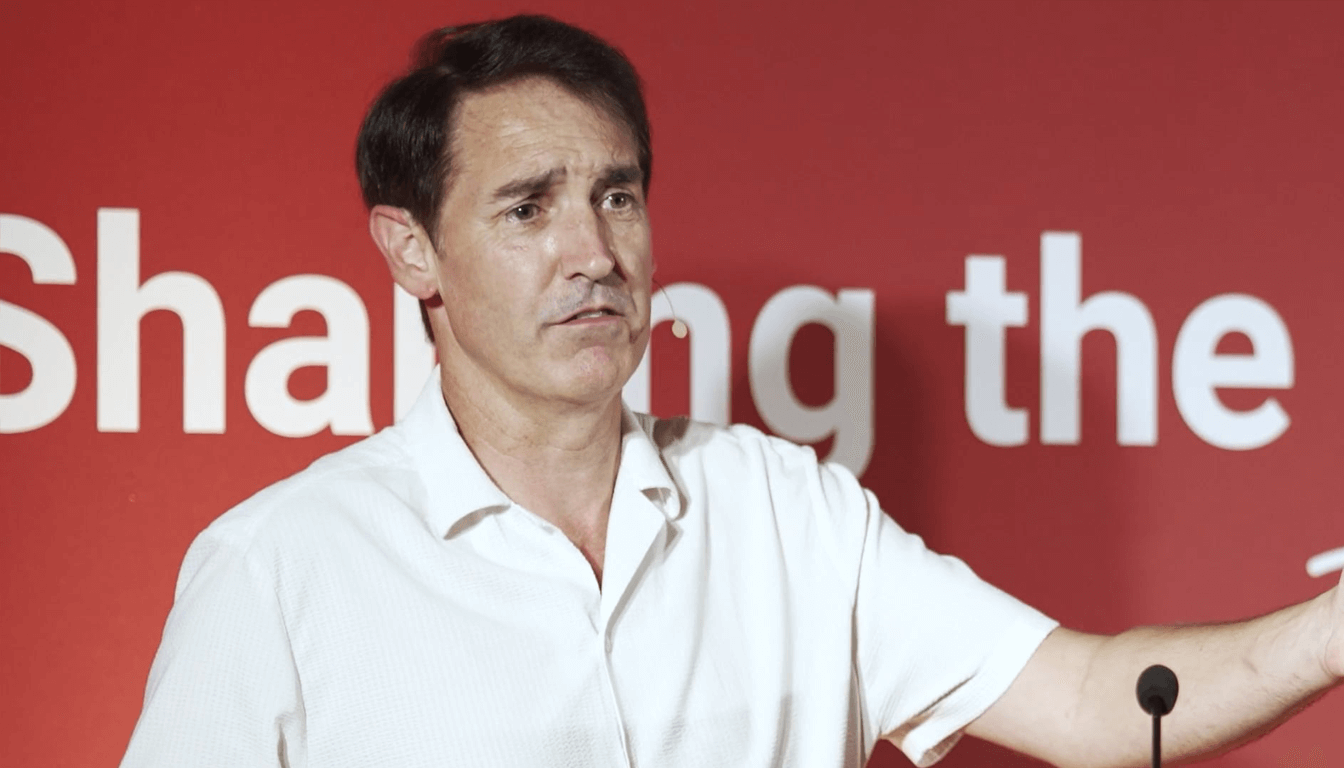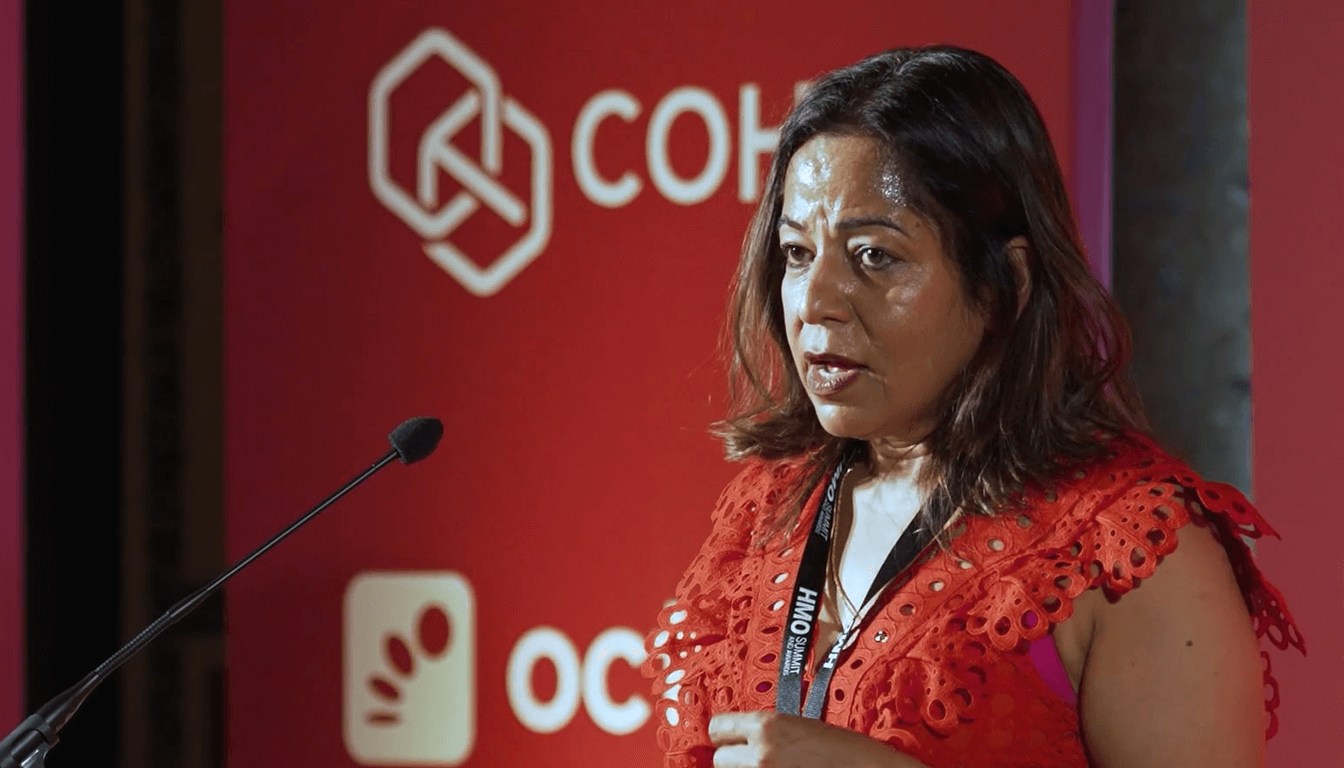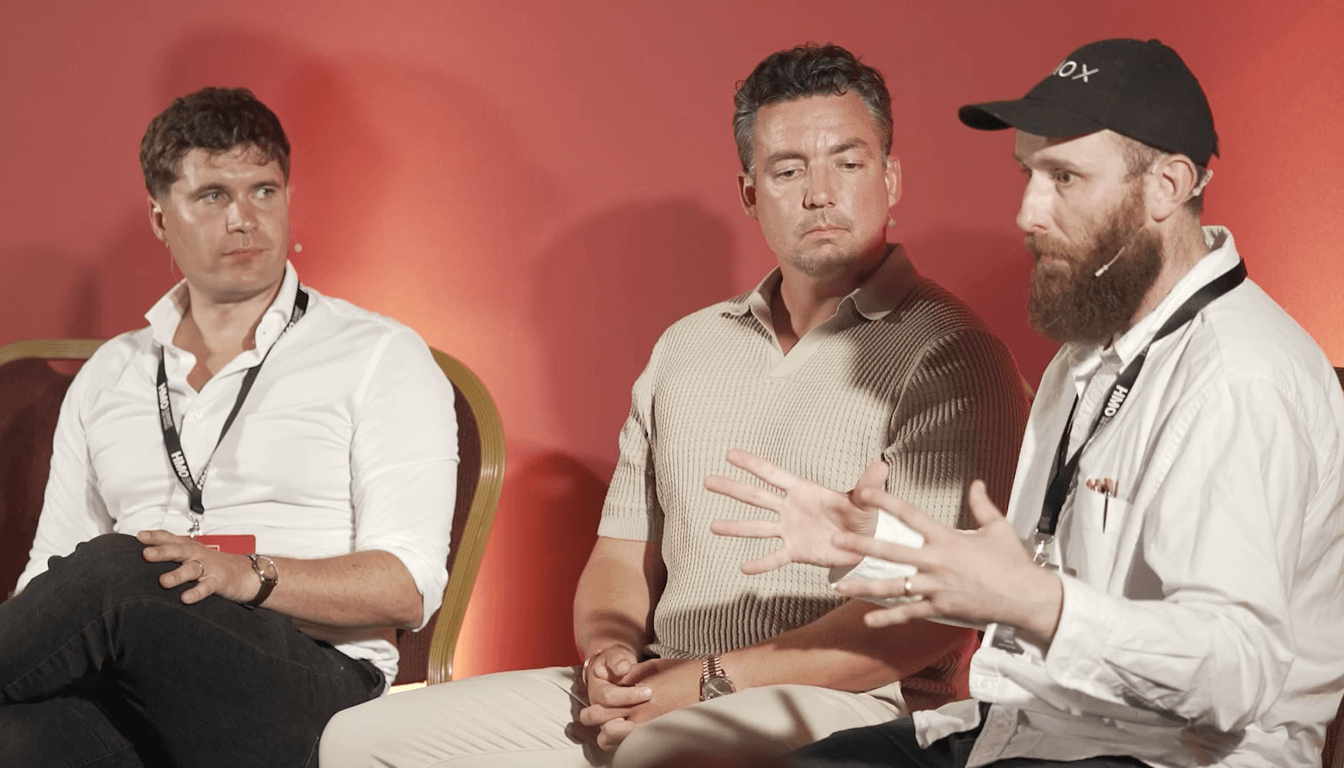The Power of Design in Shared Living
In the world of property investment, especially in Houses in Multiple Occupation (HMOs), topics like deal sourcing, finance, and filling rooms dominate the conversation. But according to Tom Charrier, co-founder of Designs on Property and an advocate for high-impact spaces, there’s one often-underestimated pillar that trumps them all: design.
Delivered at the HMO Summit 2023 in collaboration with COHO, Charrier’s talk revealed how investing in thoughtful, human-centered design isn’t just a nice-to-have—it’s a business strategy. One that drives better tenant outcomes, stronger revenues, and higher long-term asset value.
Let’s explore the key principles and data-backed reasons why design matters more than ever in today’s HMO market.
90% of Life Happens Indoors – Why That Changes Everything
One of the most compelling arguments for better HMO design is simple: we live indoors.
Charrier presented a striking data point: on average, Europeans spend 90% of their lives inside buildings, with 65% of that time spent inside their homes. For a 40-year-old, that translates to 26 years spent at home. This reality makes residential space one of the most powerful influences on human well-being. It affects everything from our:
- Mental and physical health
- Daily productivity
- Interpersonal relationships
- Emotional state and sense of belonging
Design is not superficial. It’s foundational.
Why Good Design Isn’t Expensive – It’s Intentional
Charrier debunks a common myth: that great design is only for those with deep pockets. In reality, impactful design starts with thoughtfulness, not luxury materials.
It doesn’t require Instagram-worthy finishes or expensive fixtures. What matters more is how people use space and how well that space supports their day-to-day life.
- Examples of easy, high-impact design changes include:
- Maximizing natural light in bedrooms with clever use of curtains or blinds
- Improving workspaces, especially as remote work continues to rise
- Creating social zones that are spacious, functional, and welcoming
- Reducing noise pollution through soft materials and layout planning
- Providing options for personalization so tenants feel in control of their space
These changes don’t just feel good—they drive demand and retention.
The ROI of Design: Higher Rents, Lower Voids, Better Tenants
One of the most valuable insights from the talk was this: Good design increases your returns.
Charrier shared how HMO tenants, especially students and young professionals, are becoming increasingly discerning. They’re willing to pay a premium for homes that align with their lifestyle and well-being. This is backed by research from Knight Frank, which surveyed 20,000 young people and found that the top decision-making factors included:
- Better workspace design
- More natural light
- Well-designed social spaces
- Properties that support mental wellness
The outcome? Investors see:
- Higher rental income
- Longer tenancies
- Less turnover and fewer voids
- Happier tenants who respect the property
And when assets are revalued, especially for large HMOs or portfolios, these higher rents translate into increased capital value, more favourable refinancing terms, and stronger long-term growth.
Design as a Demand Generator: The Secret to Sustainable HMO Investing
Charrier makes a powerful point: Most of what landlords obsess over, finding deals, raising finance, managing renovations, relates to supply.
But if you don’t have demand, those supply-side wins mean nothing.
“Design is what creates demand,” he says. It’s what tenants connect with. It’s what turns an empty room into a sought-after lifestyle choice.
When you create homes people love, money finds you. You don’t need to chase deals or investors – they come to you.
The Timeless Framework: Function, Nature, Comfort, Control, Beauty
To help HMO investors approach design more intentionally, Charrier introduced a powerful five-part framework:
- Function: How do people use the space? Are you making it easier for them to work, relax, sleep, cook, and connect?
- Nature: Biophilic design—connecting people with nature—has proven effects on well-being. Add plants, natural textures, and views of the outdoors. People pay up to 25% more for spaces that feel “green and leafy.”
- Comfort: Goes beyond furniture. Think: temperature regulation, noise levels, air quality, and privacy. These small changes compound into a vastly better experience.
- Control: Tenants are happier when they have control over their environment—even if they never use it. Allow them to adjust lighting, personalize their room, or choose the layout.
- Beauty: Design should make people feel something. Whether bold and vibrant or calm and meditative, evoke emotion. It doesn’t need to follow trends—just follow character and purpose.
Build Your HMO Business Around What Won’t Change
Quoting Jeff Bezos, Charrier reminds us that great businesses are built around what won’t change, not fleeting trends.
So what will never change?
- People will always need shelter
- They’ll always value well-being, community, health, and purpose
- They’ll always seek good value for mone
If your HMOs support these timeless needs, you’re not just building a property portfolio, you’re building a resilient business.
Final Thoughts: Design as a Force for Good (and Profit)
In an era of rising tenant expectations and post-pandemic lifestyle shifts, design isn’t optional, it’s essential.
When you design with care:
- You attract better tenants
- You increase your income
- You grow your portfolio value
- And most importantly, you positively impact lives
As Charrier puts it, “We’re in an industry where we can get paid to do good.”
So next time you walk into a tired HMO, don’t just see a renovation project. See an opportunity to create meaningful, valuable, life-enhancing spaces, for your tenants and your future.
The Power of Design in Shared Living
In the world of property investment, especially in Houses in Multiple Occupation (HMOs), topics like deal sourcing, finance, and filling rooms dominate the conversation. But according to Tom Charrier, co-founder of Designs on Property and an advocate for high-impact spaces, there’s one often-underestimated pillar that trumps them all: design.
Delivered at the HMO Summit 2023 in collaboration with COHO, Charrier’s talk revealed how investing in thoughtful, human-centered design isn’t just a nice-to-have—it’s a business strategy. One that drives better tenant outcomes, stronger revenues, and higher long-term asset value.
Let’s explore the key principles and data-backed reasons why design matters more than ever in today’s HMO market.
90% of Life Happens Indoors – Why That Changes Everything
One of the most compelling arguments for better HMO design is simple: we live indoors.
Charrier presented a striking data point: on average, Europeans spend 90% of their lives inside buildings, with 65% of that time spent inside their homes. For a 40-year-old, that translates to 26 years spent at home. This reality makes residential space one of the most powerful influences on human well-being. It affects everything from our:
- Mental and physical health
- Daily productivity
- Interpersonal relationships
- Emotional state and sense of belonging
Design is not superficial. It’s foundational.
Why Good Design Isn’t Expensive – It’s Intentional
Charrier debunks a common myth: that great design is only for those with deep pockets. In reality, impactful design starts with thoughtfulness, not luxury materials.
It doesn’t require Instagram-worthy finishes or expensive fixtures. What matters more is how people use space and how well that space supports their day-to-day life.
- Examples of easy, high-impact design changes include:
- Maximizing natural light in bedrooms with clever use of curtains or blinds
- Improving workspaces, especially as remote work continues to rise
- Creating social zones that are spacious, functional, and welcoming
- Reducing noise pollution through soft materials and layout planning
- Providing options for personalization so tenants feel in control of their space
These changes don’t just feel good—they drive demand and retention.
The ROI of Design: Higher Rents, Lower Voids, Better Tenants
One of the most valuable insights from the talk was this: Good design increases your returns.
Charrier shared how HMO tenants, especially students and young professionals, are becoming increasingly discerning. They’re willing to pay a premium for homes that align with their lifestyle and well-being. This is backed by research from Knight Frank, which surveyed 20,000 young people and found that the top decision-making factors included:
- Better workspace design
- More natural light
- Well-designed social spaces
- Properties that support mental wellness
The outcome? Investors see:
- Higher rental income
- Longer tenancies
- Less turnover and fewer voids
- Happier tenants who respect the property
And when assets are revalued, especially for large HMOs or portfolios, these higher rents translate into increased capital value, more favourable refinancing terms, and stronger long-term growth.
Design as a Demand Generator: The Secret to Sustainable HMO Investing
Charrier makes a powerful point: Most of what landlords obsess over, finding deals, raising finance, managing renovations, relates to supply.
But if you don’t have demand, those supply-side wins mean nothing.
“Design is what creates demand,” he says. It’s what tenants connect with. It’s what turns an empty room into a sought-after lifestyle choice.
When you create homes people love, money finds you. You don’t need to chase deals or investors – they come to you.
The Timeless Framework: Function, Nature, Comfort, Control, Beauty
To help HMO investors approach design more intentionally, Charrier introduced a powerful five-part framework:
- Function: How do people use the space? Are you making it easier for them to work, relax, sleep, cook, and connect?
- Nature: Biophilic design—connecting people with nature—has proven effects on well-being. Add plants, natural textures, and views of the outdoors. People pay up to 25% more for spaces that feel “green and leafy.”
- Comfort: Goes beyond furniture. Think: temperature regulation, noise levels, air quality, and privacy. These small changes compound into a vastly better experience.
- Control: Tenants are happier when they have control over their environment—even if they never use it. Allow them to adjust lighting, personalize their room, or choose the layout.
- Beauty: Design should make people feel something. Whether bold and vibrant or calm and meditative, evoke emotion. It doesn’t need to follow trends—just follow character and purpose.
Build Your HMO Business Around What Won’t Change
Quoting Jeff Bezos, Charrier reminds us that great businesses are built around what won’t change, not fleeting trends.
So what will never change?
- People will always need shelter
- They’ll always value well-being, community, health, and purpose
- They’ll always seek good value for mone
If your HMOs support these timeless needs, you’re not just building a property portfolio, you’re building a resilient business.
Final Thoughts: Design as a Force for Good (and Profit)
In an era of rising tenant expectations and post-pandemic lifestyle shifts, design isn’t optional, it’s essential.
When you design with care:
- You attract better tenants
- You increase your income
- You grow your portfolio value
- And most importantly, you positively impact lives
As Charrier puts it, “We’re in an industry where we can get paid to do good.”
So next time you walk into a tired HMO, don’t just see a renovation project. See an opportunity to create meaningful, valuable, life-enhancing spaces, for your tenants and your future.

